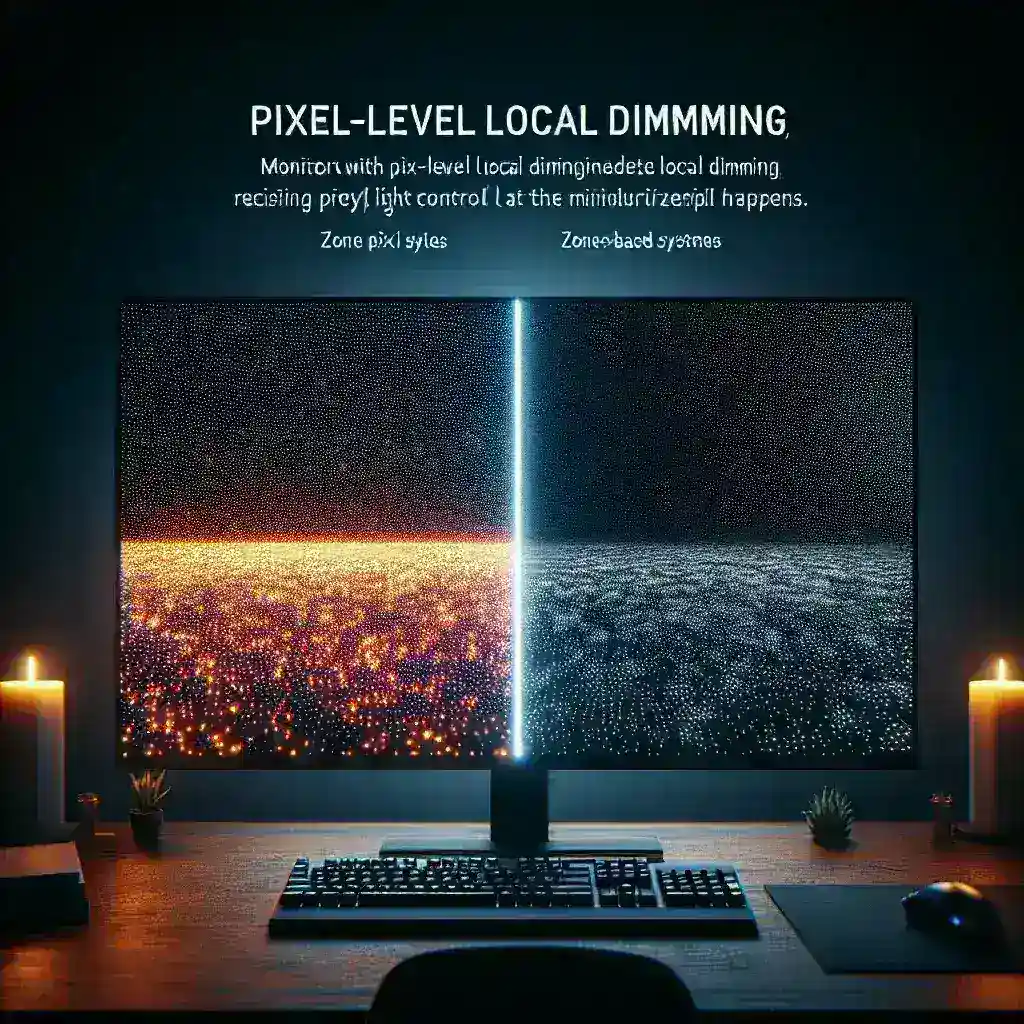Monitors today employ advanced technologies to deliver superior picture quality and user experience. Among these improvements, local dimming technologies have stood out as game-changers in enhancing contrast and brightness. Two main types of local dimming technologies are prevalent: pixel-level local dimming and zone-based local dimming. Understanding the difference between these systems can significantly impact your choice of monitor.
The Basics: Pixel-Level Local Dimming vs. Zone-Based Local Dimming
In essence, local dimming allows a display to dynamically adjust the brightness of individual sections or pixels to enhance image quality. Here’s how the two main types differ:
| Criteria | Pixel-Level Local Dimming | Zone-Based Local Dimming |
|---|---|---|
| Control | Controls individual pixels | Controls groups of pixels or zones |
| Brightness Adjustment | Highly precise | Moderately precise |
| Contrast | Superior contrast ratios | Reasonably good contrast ratios |
| Cost | Typically more expensive | More affordable |
Benefits of Pixel-Level Local Dimming
Enhanced Contrast and Black Levels
Pixel-level local dimming provides the ability to switch off individual pixels, offering unparalleled black levels and contrast. This feature is particularly beneficial for HDR content where deep blacks and bright highlights are essential.
Greater Detail and Clarity
Since each pixel can be controlled independently, the overall image sharpness and clarity are significantly improved. This technology minimizes light bleeding, which translates to more precise imagery, beneficial in graphic design and gaming.
Reduced Halo Effect
Pixel-level local dimming mitigates the halo effect often seen in zone-based dimming. This is particularly noticeable in scenes with high-contrast elements such as text on a dark background.
Benefits of Zone-Based Local Dimming
Cost-Effective
Compared to pixel-level local dimming, zone-based systems are generally more affordable. This makes them a popular choice for budget-conscious consumers.
Good Performance for General Use
Zone-based dimming is suitable for general media consumption, offering good contrast and brightness levels. While not as precise as pixel-level dimming, it performs adequately for most everyday tasks.
Less Complex Manufacturing
Manufacturing zone-based dimming systems is less complex, thereby reducing production costs. This also often translates to a more durable and reliable product.
Technological Considerations
Both pixel-level and zone-based systems leverage different technological approaches:
Pixel-Level Local Dimming
Often found in OLED displays, pixel-level dimming uses organic compounds that emit light when an electric current is applied. Each pixel acts as its own light source, allowing for precise control.
Zone-Based Local Dimming
Typically found in LED and LCD displays, this system uses backlighting divided into various zones. The brightness of these zones is adjusted based on the content displayed, offering an improved contrast compared to traditional displays.
Choosing the Right Monitor for Your Needs
Your choice between pixel-level and zone-based local dimming depends on your specific needs and budget:
For Professionals and Gamers
If you require the highest image quality, such as for gaming, graphic design, or professional video editing, a monitor with pixel-level local dimming is likely the best choice.
For Everyday Use
If your primary use is web browsing, watching videos, and general office work, a zone-based local dimming system should suffice and is more budget-friendly.
Final Thoughts
Both pixel-level local dimming and zone-based local dimming offer unique advantages and come with their own set of compromises. Understanding these differences can help you make an informed decision that best suits your needs and budget.

